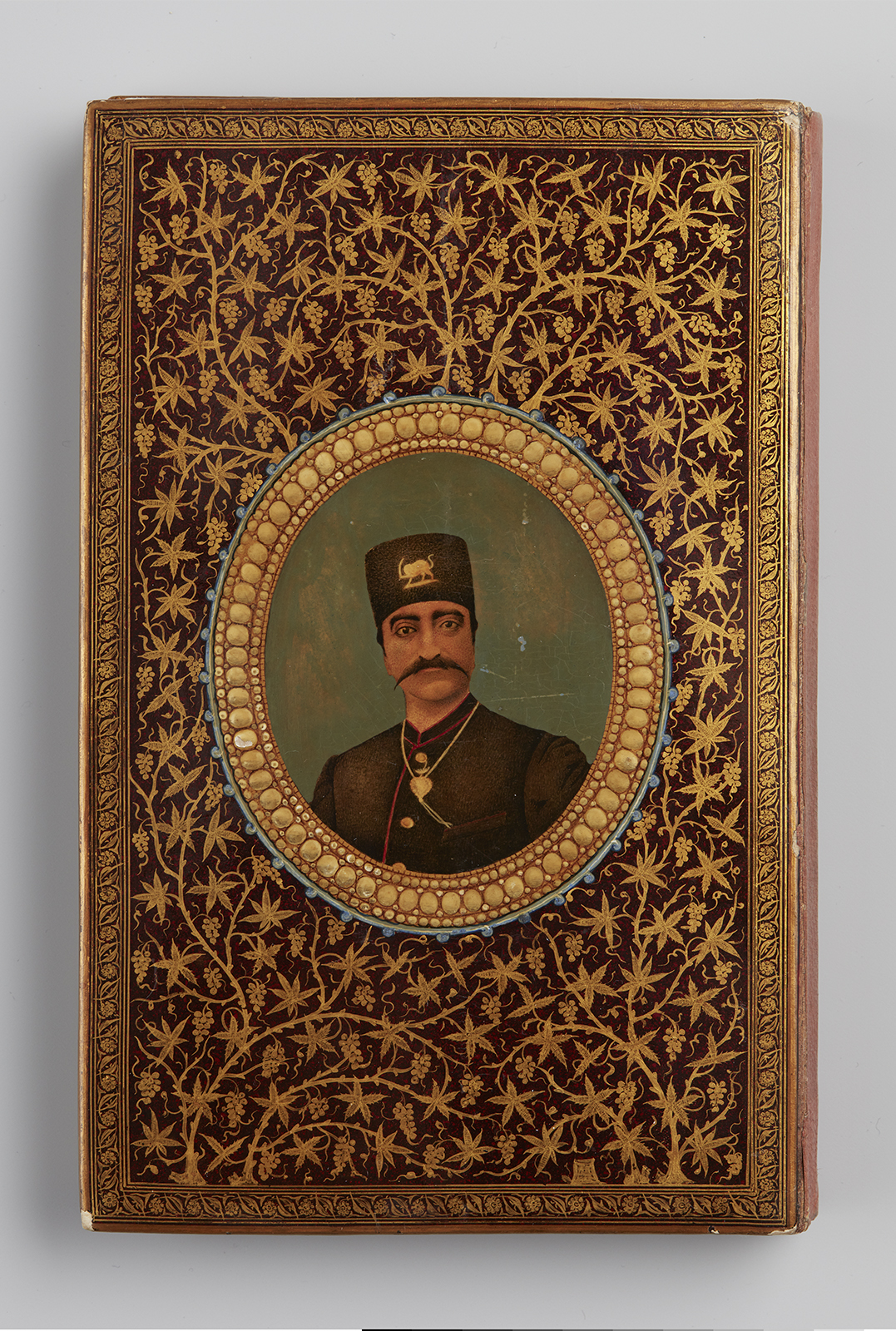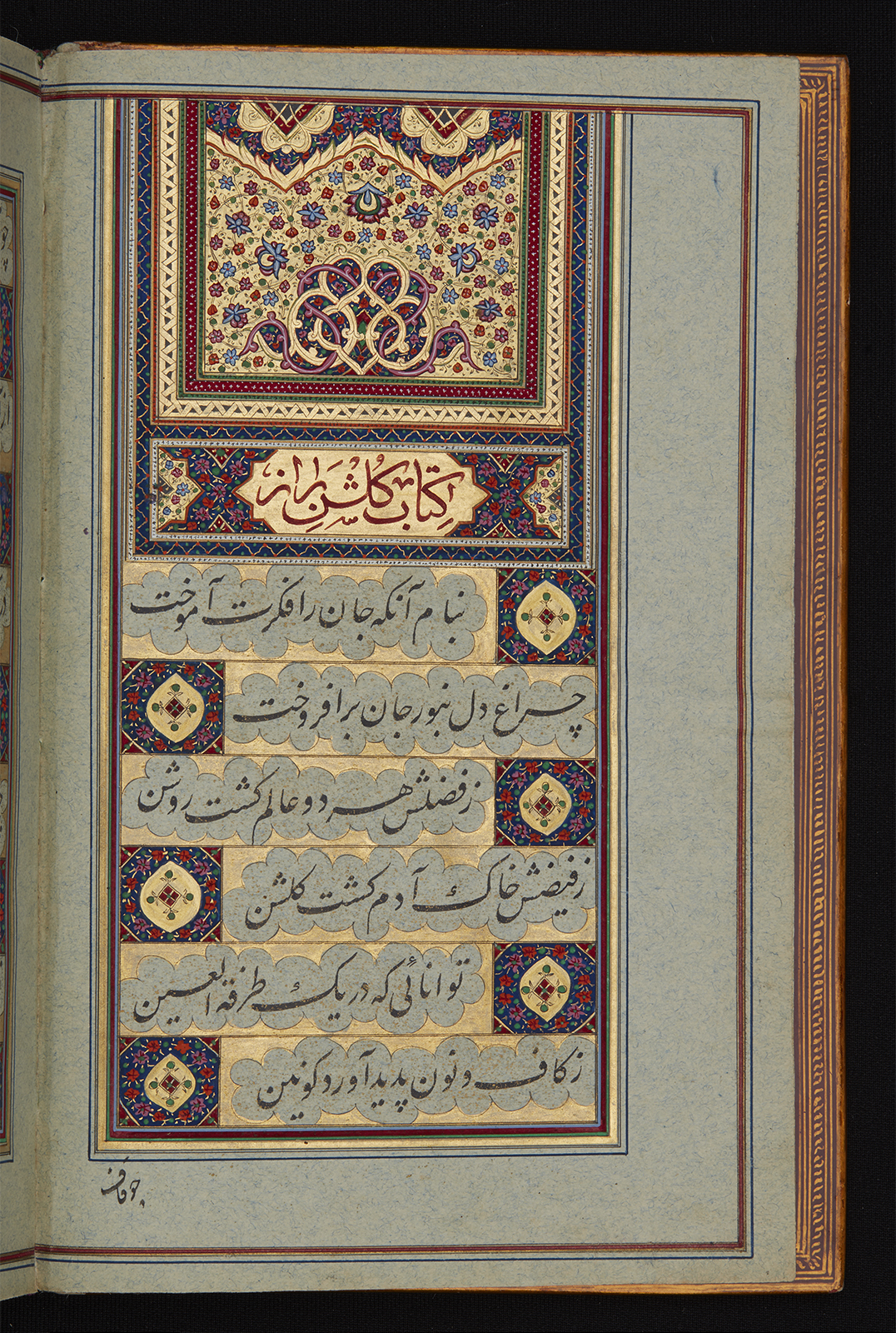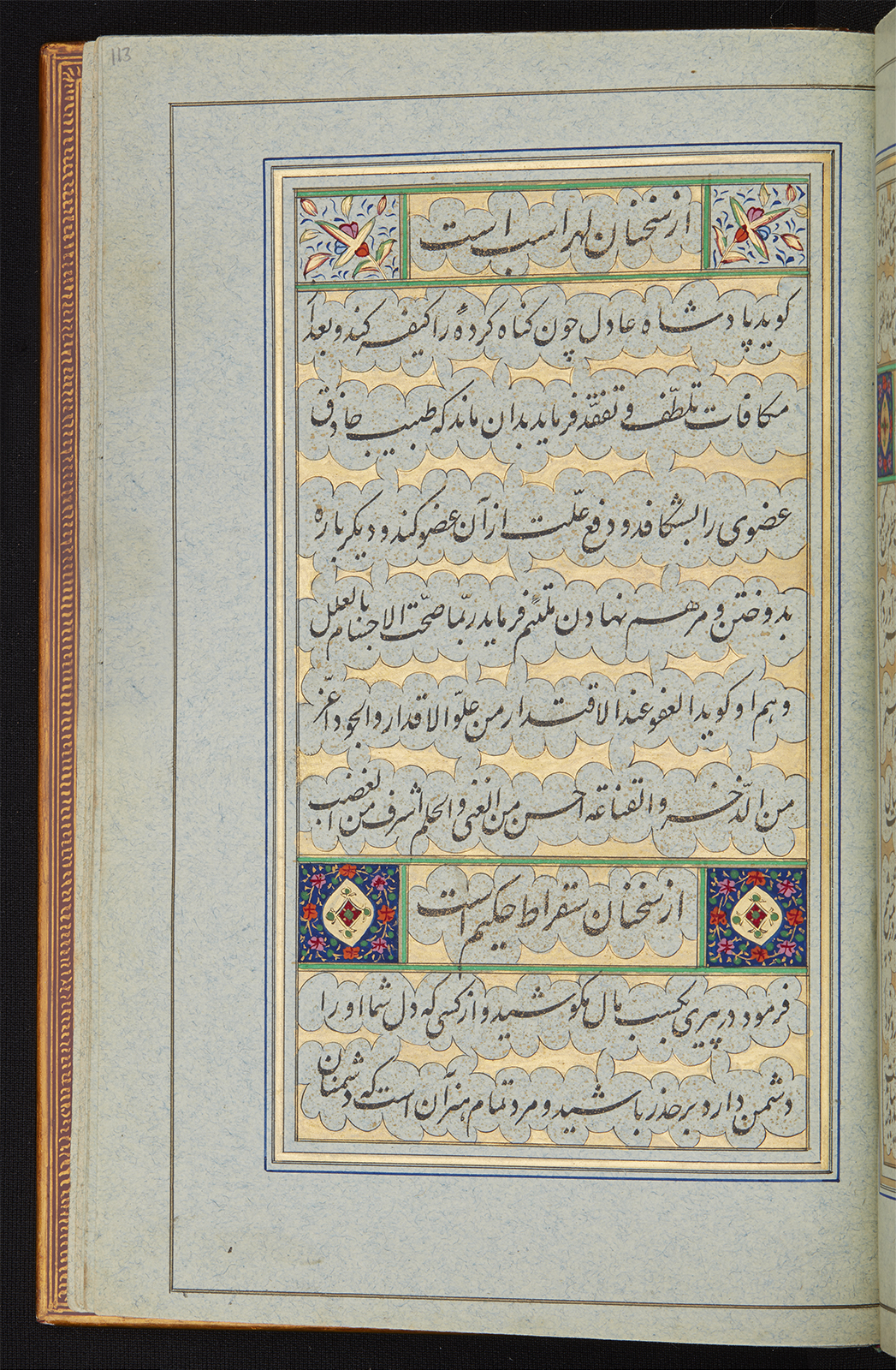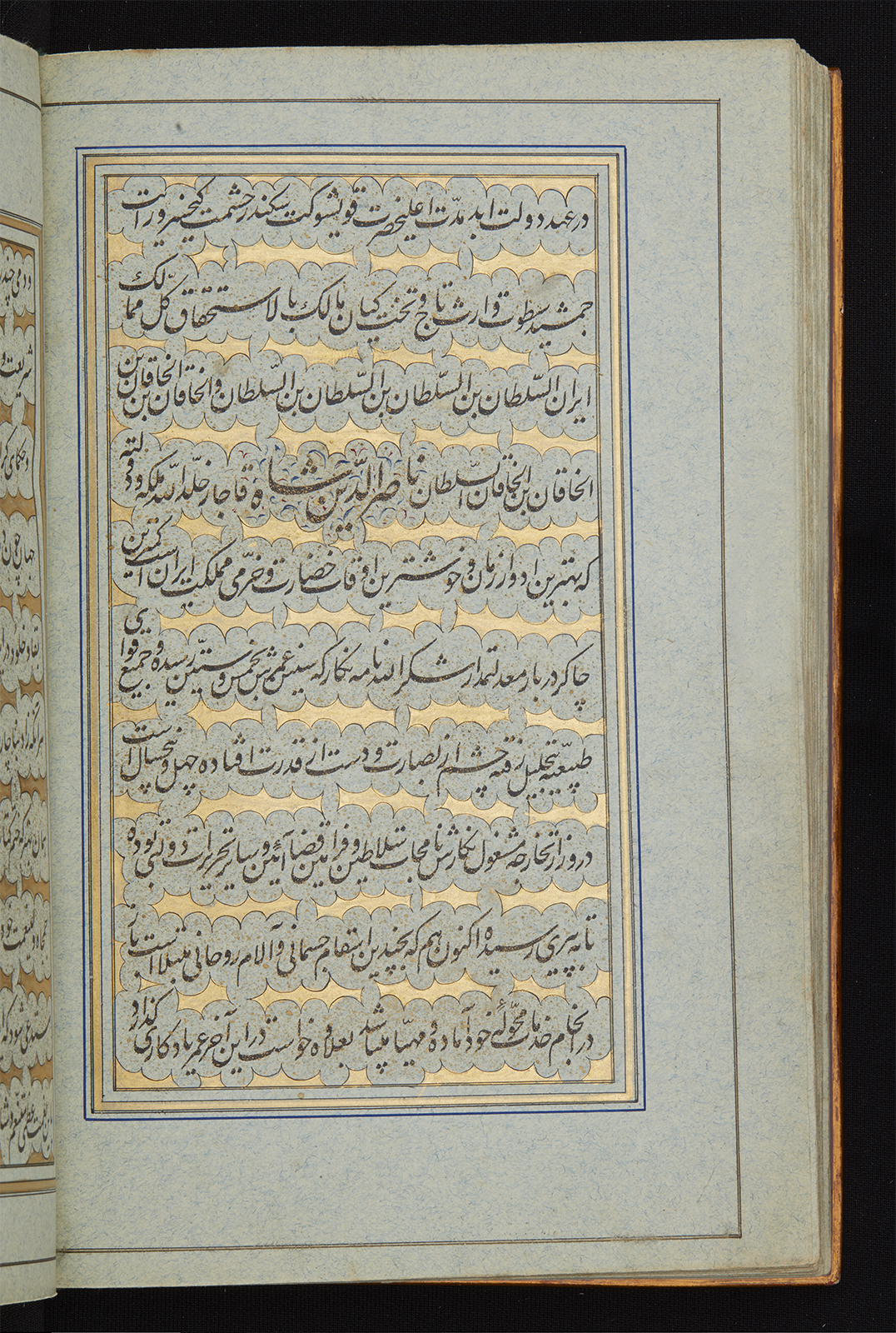Click on the image to zoom
Manuscript of Gulshan-i Raz (The Rose Garden of Mysteries)
- Accession Number:AKM276
- Creator:By Shaykh Mahmud b. ‘Abd-al-karim Shabistari (d. ca. 740 AH/1339–40)
- Place:Tehran, Iran
- Dimensions:11.3 x 18.2 cm
- Date:dated Shawwal-Dhu’l-Qa‘da 1310 H/April–May 1893
- Materials and Technique:ink, opaque watercolour, and gold on paper; lacquer binding
Made for Nasir al-Din Shah Qajar (r. 1264–1313 AH/1848–96), the manuscript Gulshan-i Raz (The Rose Garden of Mysteries) consists of one hundred and nineteen calligraphic pages, each with ten lines of gold-sprinkled nasta‘liq in the hand of Shukrallah Nameh-Nigar. The name of Nasir al-Din Shah Qajar is mentioned on the page preceding the last one in the manuscript, and his portrait is painted on the central medallions on the front and back exterior covers. The binding reflects the combination of tradition and modernity during the Qajar period. It features the customary composition of scrolling vegetal motif in gold on a dark background wedded to European-style portraits of the shah.
Further Reading
With slightly over a thousand couplets, Gulshan-i Raz is a mathnavi (a poem in rhymed couplets) and concerns the mystical doctrine of Sufism. The author, Shaykh Mahmud b. ‘Abd-al-karim Shabistari (d. ca. 740 AH/1339–40), describes at the beginning of his treatise that he wrote it in 717 AH/1317 immediately after he received fifteen rhetorical questions from Amir Husayn Husayni, a renowned Sufi from Khurasan. Shabistari wrote the answers to these single distich questions in the same meter that Husayni penned them. [1] Shortly after, in order to describe the discussed concepts further, he added some sections to the text and called the completed work Gulshan-i raz, a name he said was revealed to his heart. [2]
— Bita Pourvash
Notes
[1] Hamid Algar, “Golsan-e raz,” Encyclopaedia Iranica 11, fasc. 1 (2003): 109–11.
[2] Mentioned by Shabistari at the beginning of Gulshan-i Raz in the last two verses of the section entitled dar sabab-i nazm-i kitab va tarikh (“on the reason for composing the work and its date”).
References
Algar, Hamid. “GOLŠAN-E RĀZ,” Encyclopædia Iranica, XI/1, pp. 109-111, accessed September 18, 2018, http://www.iranicaonline.org/articles/golsan-e-raz
Note: This online resource is reviewed and updated on an ongoing basis. We are committed to improving this information and will revise and update knowledge about this object as it becomes available.








